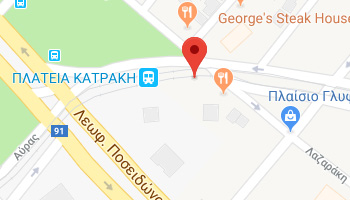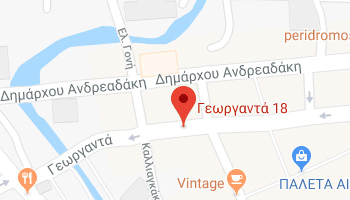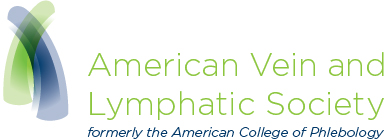Super User
Peripheral Arterial Disease “PAD” and Intermittent Claudication
The vessels that carry the blood from the heart to the legs are called arteries. Peripheral arterial disease is the situation when the arteries of the legs are blocked or stenosed and the amount of blood (and oxygen) that reaches the peripheral tissues is not sufficient to sustain the viability of the tissue. The main two reasons for blockage is embolism and severe atheromatosis. Usually embolism is from cardiac arrythmia and the result is acute pain, pale colour, cold leg and diminished muscle power of the infected leg. This is an emergency situation and the patient must be treated immediately in a vascular department (he needs embolectomy that is removal of the thrombus so the blood can flow freely again and avoid gangrene).
Atheromatosis is the formation of plaques inside the arteries in people that usually are diabetic, smokers, hypertensive or have high levels of cholesterol. When the plaques grow enough they cause stenosis of the lumen of the vessels and compromise the blood flow. The patient is having difficulty walking after a distance because of pain in the leg due to ishcemia and he has to stop for a few minutes for the pain to go away (this is called intermittent claudication). The therapy of this situation is conservative with drugs and exercise or surgical in more severe situation. The surgical approach can be endovascular (ie stents or balloon dilatation) or classic surgery (ie atherectomy or bypass).




Carotid Disease
The carotid arteries (together with the vertebral arteries) are the main arteries of the neck that supply the head (and the brain) with oxygenated blood. There have been extensive studies that established the relationship between atheromatosis of the carotid arteries and ischemic episodes of the brain.
There are two mechanisms causing brain infraction. 1. Severe stenosis of the lumen of the artery eg > 90% and 2. Embolism is when small pieces detach from the atheromatic plaque go in the brain and cause infarction of the brains vessels. So it is vital to know if there are atheromatic plaques in your carotid arteries. The diagnosis is very simple with the ultrasound.
Especially people who smoke, are diabetics, are hypertensive, have high cholesterol and of course people who have heredity of ischemic episodes.
Therapy of the carotid plaques : according to the percentage of stenosis or the risk of embolism there are two ways of addressing this problem. Treatment with what we call best medical therapy (that is changing the lifestyle and give medical drugs that protect the patient from suffering a stroke). And surgery that removes the high risk plaques from the carotid artery.
digital angiography of a carotid with significant stenosis of about 80%

the atheromatic plaque that was removed from that artery.

Ulcers Due to Diabetes or Arteriopathy
Diabetes can cause complications arising from hyperglycemia that can either be macrovascular or microvascular. The macrovascular disease affects mainly the cardiovascular and cerebrovascular systems, and the microvascular disease includes nephropathy, retinopathy, and neuropathies. A debilitating complication of diabetes mellitus is diabetic ulcers, which leads to increased overall morbidity in patients and the inciting factor is most often a minor trauma.
Arteriopathy is caused mainly by atheromatosis which is the formation of plaques inside the arteries in people that usually are diabetic, smokers, hypertensive or have high levels of cholesterol. When the plaques grow enough they cause stenosis of the lumen of the vessels and compromise the blood flow. As a result the tissue may not be viable and there is necrosis and thus an ulcer is formed.
In patients with ulcers it is necessary that a vascular surgeon examines them so as to find the cause of the ulcer. If there is a problem in macrovascular level that can be fixed it is of outmost importance to fix it (either with surgery or endovascular techniques) so as to restore the proper flow to the leg. If the problem is in microvascular level then the patient should be given instructions for changing lifestyle (healthy diet and exercise), control all the factors that cause atheromatosis (ie blood sugar levels, arterial blood pressure, levels of lipids in the blood), proper care of the feet (special ointments, correct cutting of nails etc) and of course pharmaceutical treatment.

Aneurysm of the Abdominal Aorta
The blood is carried from the heart to all the parts of our body by the arteries and the biggest artery is the aorta which starts from the heart and ends inside the abdomen near our belly button. The aorta is in fact an elastic tube that carries blood under pressure. Sometimes this elastic tube looses its strength and expands in diameter (from 2 cm diameter which is the normal it can reach 5,6,7 or more cm). The wall of the aorta then becomes fragile and there can be a rapture causing the blood to come out of the aorta and spread inside the abdomen. As a result the patient is in shock with high probability of loosing his life from hemorrhage. Thats why is very important to know if someone has aneurysm.
The diagnosis is very simple. All we need is an ultrasound of the abdomen checking the abdominal aorta.
The reasons why the aorta expands in diameter are mainly two : heredity and smoking. So it is advised that people who have a relative with aneurysm or smoke check the dimensions of their abdominal aorta with ultrasound.
The treatment is by open surgery or endovascular repair (stent).



Διαδίκτυο
Η φλεβική υπέρταση
Πηγή: health4you.gr
Εξαφανίστε τις ευρυαγγείες & τα φλεβικά αιμαγγειώματα
Πηγή: health4you.gr
Φλεβική θρόμβωση των κάτω άκρων, μπορείτε να προστατευτείτε5
Πηγή: health4you.gr
Λιποίδημα: Μάθετε πως θεραπεύεται αυτή η άγνωστη ασθένεια
Πηγή: health4you.gr
Εξαφανίστε τα φλεβικά αιμαγγειώματα και τις ευρυαγγείες ανώδυνα
Πηγή: health4you.gr
Ενδοαυλικό laser, η νέα εξελιγμένη επεμβατική θεραπεία των επιπλοκών της φλεβικής ανεπαρκείας και των κιρσών κάτω άκρων
Πηγή: health4you.gr
Φλεβική ανεπάρκεια: Η ενδοαυλική τεχνική με laser αποκαθιστά ανώδυνα τις φλέβες
Πηγή: health4you.gr
Άτονα έλκη και η θεραπεία της χρόνιας φλεβικής ανεπάρκειας
Πηγή: newsbeast.gr
Η αντιμετώπιση της φλεβικής υπέρτασης
Πηγή: newsbeast.gr
Η σύγχρονη αντιμετώπιση της φλεβικής ανεπάρκειας και φλεβικής στάσης με ενδοσκοπικό laser.
Πηγή: medicalblog.gr
H φλεβική ανεπάρκεια και η άμεση θεραπεία της!
Πηγή: medicalblog.gr
Άτονα έλκη και η σύγχρονη αντιμετώπιση της χρόνιας φλεβικής ανεπάρκειας
Πηγή: medicalblog.gr
Φλεβική ανεπάρκεια – Κιρσοί
Πηγή: ethnos.gr
Τέλος στους κιρσούς με ενδοφλέβιο laser
Πηγή: newpost.gr
ΦΛΕΒΙΚΗ ΘΡΟΜΒΩΣΗ ΤΩΝ ΚΑΤΩ ΑΚΡΩΝ - ΤΡΟΠΟΙ ΠΡΟΛΗΨΗΣ ΚΑΙ ΑΝΤΙΜΕΤΩΠΙΣΗΣ
Πηγή: newsbomb.gr
Κιρσοί και φλεβική ανεπάρκεια: Νέα θεραπεία με λέιζερ
Πηγή: onmed.gr
Λιποίδημα: Υπάρχει οριστική θεραπεία;
Πηγή: shape.gr
Σβήσε τις ευρυαγγείες & τα φλεβικά αιμαγγειώματα
Πηγή: shape.gr
Εξελιγμένη επεμβατική θεραπεία των επιπλοκών της φλεβικής ανεπαρκείας
Πηγή: newsbeast.gr
Ανώδυνη και αναίμακτη θεραπεία των κιρσών με ενδοφλέβιο λέιζερ
Πηγή: in.gr
Ευρυαγγείες: ενα πολυπαραγοντικό χρόνιο πρόβλημα
Πηγή: in.gr
Πώς να εξαφανίσετε τις ευρυαγγείες και τα φλεβικά αιμαγγειώματα
Πηγή: queen.gr
Contact
Email: asaliveros@gmail.com
Medical Office - Glyfada
Medical Office - Livadia
H Θεραπεία του λεμφοιδήματος, μία από τις δυσκολότερες παθήσεις της αγγειοχειρουργικής
Οι νεότερες εξελίξεις για την αντιμετώπιση των ενοχλητικών ευρυαγγειών και των ελκών στα κάτω άκρα. Εντυπωσιακά αποτελέσματα μέσα σε σύντομους χρόνους
Οι νεότερες εξελίξεις για την αντιμετώπιση των ενοχλητικών ευρυαγγειών και των ελκών στα κάτω άκρα. Εντυπωσιακά αποτελέσματα μέσα σε σύντομους χρόνους
Τέλος στη Φλεβική Ανεπάρκεια, χωρίς πόνο, ράμματα, ουλές και αφαίρεση της φλέβας. Επιστροφή του ασθενή στις δραστηριότητες του μέσα σε 3 ημέρες
Οι νεότερες εξελίξεις για την αντιμετώπιση των ενοχλητικών ευρυαγγειών και των ελκών στα κάτω άκρα. Εντυπωσιακά αποτελέσματα μέσα σε σύντομους χρόνους

















Follow Us
Contact Us
Pl. Vasos Katraki 6, 16675 Glyfada
+30 210 9648722